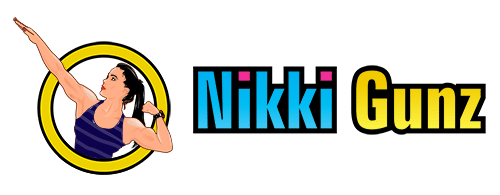The Conventional Deadlift
I think deadlifts should be incorporated in everyone’s workout. Doing proper deadlifts will potentially help improve strength, speed strength, flexibility and core strength. There are two kinds of deadlifts; conventional and sumo. For now, I will be providing some info on technique and proper form on the conventional deadlift.
The Conventional Deadlift
The Conventional Deadlift is often regarded as the beast of all lifts. If you can pull a conventional of 300+, I would say you’re a badass. It takes every little muscle in your body in order to pick up that bar from the ground. The Conventional Deadlift involves walking up to a loaded bar, feet roughly shoulder width apart, and picking it up until hips and knees are locked out. The more you can pick up, the more awesome you are. Simple as that.
The Ideal Body Type:
People with long arms and short(er) legs are generally better suited for the Conventional Deadlift. Their long arms will reduce the lifts total range of motion and their shorter legs will prevent their knees from obstructing the bar path.
The Pro’s of This Lift:
-Larger range of motion: doing the conventional lift will help improve the hypertrophic response because it requires you to work through a greater range of motion.
-Increased energy expenditure: if you are trying to burn more calories, then this is the lift for you.
-Greater Involvement of the lower back / erectors: training for lower back may benefit from using the conventional deadlift.
-Forces thoracic extension: this will likely improve posture and overall function.
The Con’s of This Lift:
-Larger range of motion: may be less efficient and result in less weight lifted during competition because of the longer range of motion.
-More Stress on Spine: this lift places for more stress on the spine (notably L4/L5), making it a more dangerous movement to perform.
-More Technically Advanced: requires much greater mobility in the ankles and T-spine. Beginners often have a great deal of trouble grasping proper technique and are more prone to injury through using this lift.
-Trunk Placement: forces you to be less upright at the start of the lift. This position theoretically makes the lift harder to complete as well as more dangerous.
Conventional Deadlift Technique
–Feet Shoulder -Width Apart
During the Conventional Deadlift your feet should remain approximately shoulder-width apart. Some lifters prefer a slightly closer stance while others favor a somewhat wider stance. There is no right or wrong so find what works and feels best for you.
-Feel the Bar on Your Shins
One of the most common errors I see among trainees is the tendency to initiate the Deadlift with the bar too far away from their shins. Prior to beginning the lift, the bar should be no more than 1 inch away from your shins.
-Sit Back, Not Down
This is known as the hip-hinge and can be a very tricky concept to teach. When you’re set up in front of the bar you should send your butt towards the wall behind you while keeping your chest tall and back flat.
-Grab the Bar
Once you have properly hip-hinged and sent your butt back towards the wall behind you, it is time to grip the bar. To do so, I suggest using an alternating grip (one palm face up and one palm face down) and gripping the bar on the outer-side of each leg. Try to keep your hands within 2 inches from either shin. Whichever hand you decide to place up/down is entirely up to you. Play around with it and find what feels most comfortable.
-Chest Tall, Back Flat and Tight
Now all you have to do is keep your chest up tall while maintaining a flat and tight back. You are now ready to initiate the pull.
-The Pull
Immediately prior to lifting the bar you should take a deep breath of air into your stomach (not your chest!). Once you’ve done this, flex your abs and brace yourself as tight as possible.
-Pull the Slack Out of the Bar
Rather than abruptly jerking the bar off the ground, slowly pull on the bar while maintaining total body tightness. Once you feel that you cannot pull on the bar without it coming off of the ground you are ready to apply maximal force.
-Drive Through Mid-Foot and Heel
As quickly and explosively as possible drive all of your weight into your mid-foot & heels. Put as much pressure into these areas as possible while squeezing your abs and maintaining a neutral spine.
-Chest First, Hips Second
If your butt shoots up ahead of your chest then you initiated the lift incorrectly. Either your technique is off, your erectors/core are weak, or you didn’t squeeze your abs tightly enough. Or it’s a combination of all three. Regardless, you must attempt to keep your chest higher than your hips throughout the entire range of motion. If your hips consistently precede your chest then reduce the weight, work on your form, and strengthen your core through various special exercises.
-Hump the Bar Hard
To finish the Deadlift you must use your butt! Basically, force your hips through and squeeze your butt. Often times people believe they are finishing the Deadlift with their butt when they are actually hyper-extending their lumbar spine (lower back). Be sure to finish by squeezing your butt and NOT overextending your lower back.

